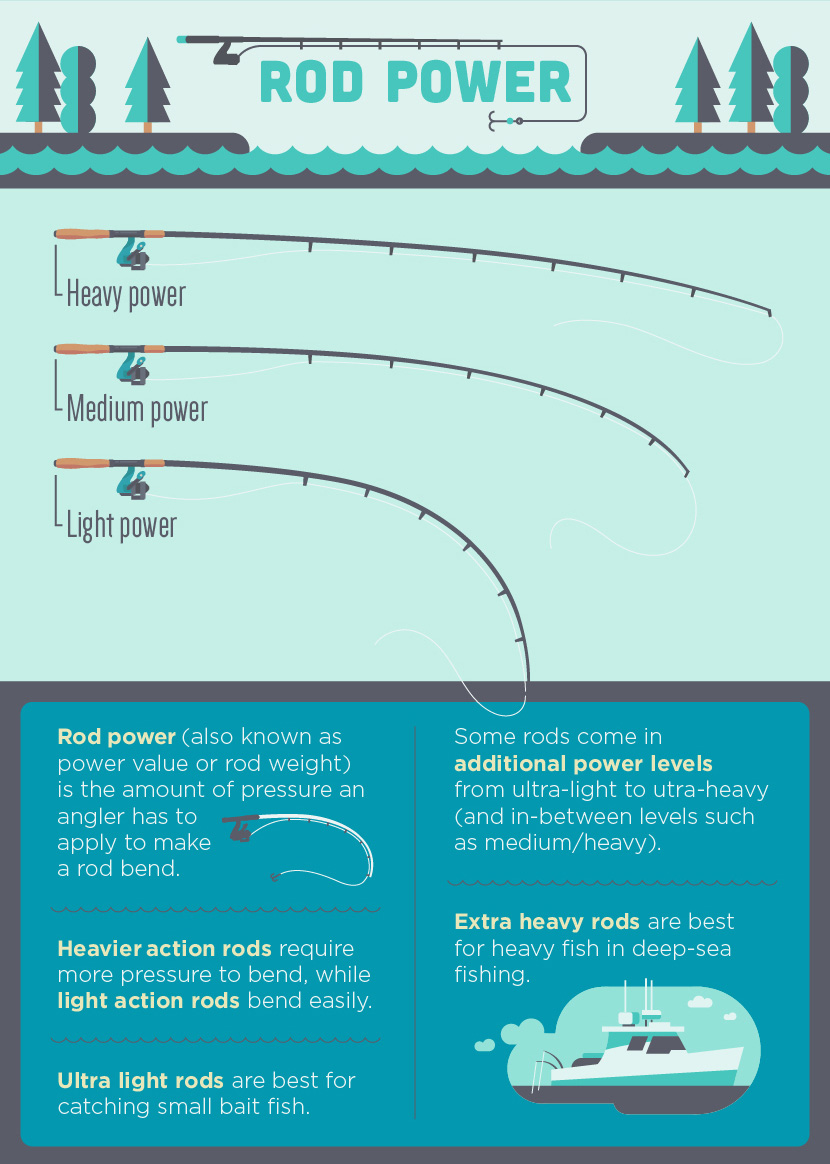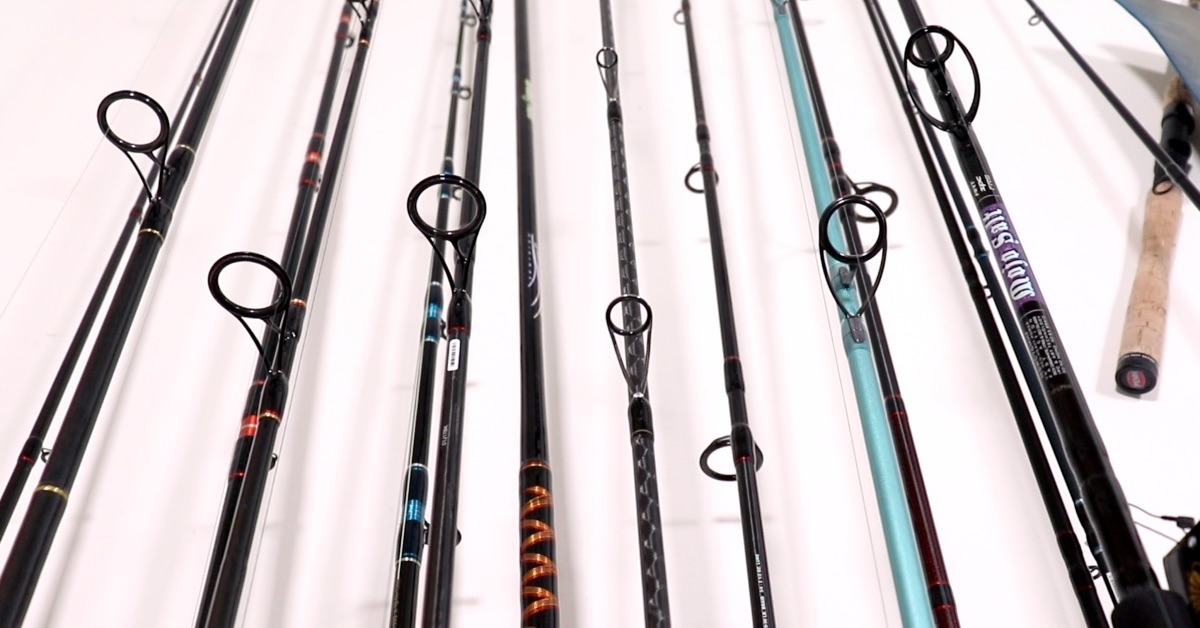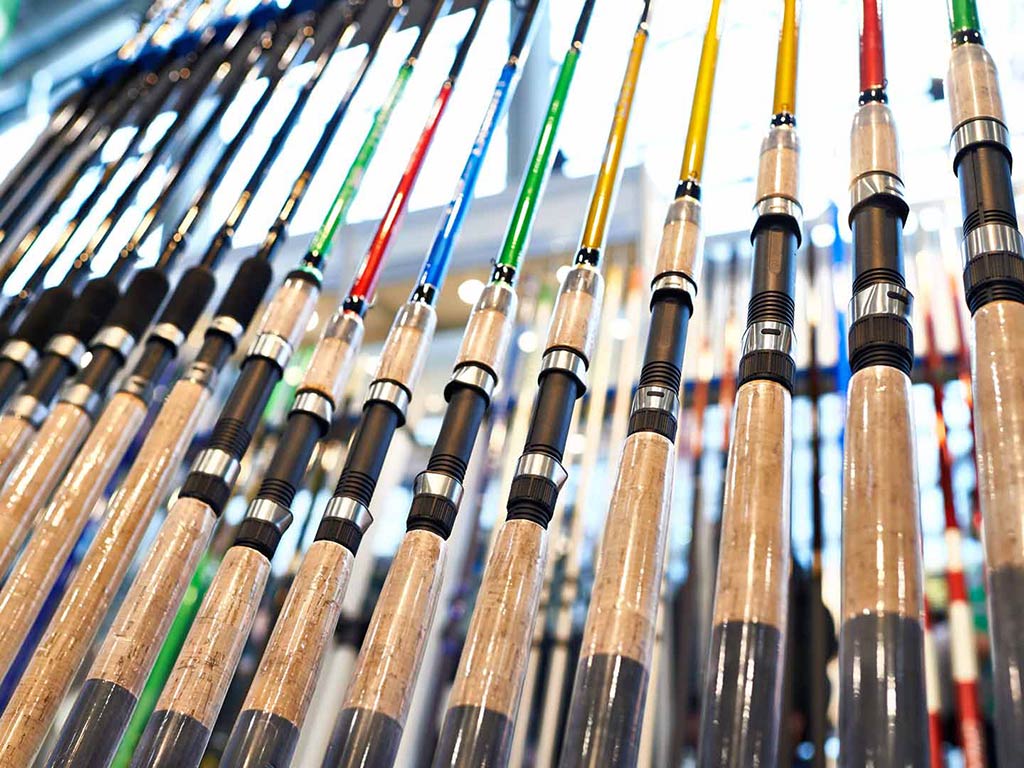Fishing is a beloved pastime across the United States, offering a connection with nature and the thrill of the catch. However, to maximize success and enjoyment, choosing the right fishing rod for the specific fish species you are targeting is essential. This article explores the factors to consider when selecting a fishing rod and provides detailed recommendations for various freshwater and saltwater fish species.
The Pillars of Rod Selection: Understanding the Key Factors
When navigating the vast array of fishing rods, four crucial factors serve as your guiding principles:
- Rod Length: Measured in feet, rod length influences casting distance, maneuverability, and the type of water you’ll be fishing in. Rods can range on the tiny end from 4 feet to the gigantic end of 14 feet.
- Short Rods (under 6ft): Ideal for tight quarters, short casts in dense cover, and targeting smaller fish with finesse. They offer exceptional accuracy and control, making them a favorite among anglers fishing from boats in brushy areas or wading in streams.
- Medium Rods (6ft to 7ft): The most versatile option, offering a good balance between casting distance, fighting power, and overall handling. Perfect for a variety of freshwater species and many inshore saltwater applications.
- Long Rods (over 7ft): Designed for long casts from the shore or boat, covering more water and reaching distant fish. They excel in open water situations and when targeting larger species that require extra casting distance.
- Rod Power: Indicated by terms like “ultra-light” to “extra-heavy,” rod power denotes the rod’s ability to handle the weight and fighting power of a fish. Choosing the right power ensures you have the strength to land your catch without compromising control or risking broken equipment.
- Light Power Rods: Ideal for panfish, crappie, and other small-bodied freshwater species. They provide exceptional sensitivity for detecting delicate bites and allow you to enjoy the fight without overpowering the fish.
- Medium Power Rods: The most widely used power category, suitable for a broad range of freshwater fish like bass, walleye, and trout. They offer a good balance between flexibility and strength.
- Heavy Power Rods: Designed for battling large, powerful fish like catfish, saltwater giants, and big game species. They provide the backbone needed to withstand aggressive runs and deep dives.

- Rod Action: This refers to how much a rod bends when pressure is applied. It influences casting performance, bite detection, and fighting characteristics.
- Fast Action: Bends primarily in the upper third of the blank. Ideal for setting hooks quickly and efficiently, particularly beneficial for aggressive fish with bony mouths.
- Medium Action: Bends throughout the middle half of the blank. Offers a balance between casting distance, sensitivity, and fighting power. A good choice for a variety of fishing techniques and species.
- Slow Action: Bends throughout the entire blank, creating a deeper flex. Provides excellent sensitivity for detecting light bites and works well for casting lightweight lures and fighting smaller fish with less risk of pulling hooks.

- Material: The material of the rod blank significantly impacts its performance and overall feel.
- Fiberglass: Known for its durability and affordability. Fiberglass rods are a good choice for beginners or anglers targeting large fish with heavy tackle. While not as sensitive as graphite, they can be a good option for specific situations.
- Graphite: Offers superior lightness and sensitivity, making them ideal for experienced anglers who require superior feel and bite detection. However, they can be more fragile than fiberglass rods.
- Composite: A blend of fiberglass and graphite, combining the advantages of both materials. Composite rods offer a good balance of sensitivity, strength, and affordability.
Choosing Your Weapon: Matching Rods to Specific Fish Species
Now that you’re familiar with the fundamental selection factors, let’s explore how to apply this knowledge to target specific fish species:
Freshwater Fishing:
Bass Fishing:
- Rod Length: 6’6″ to 7’6″ medium-length rods offer a good balance for casting a variety of lures and fighting bass in cover.
- Rod Power: Medium-heavy to heavy power rods provide the strength to pull bass out of heavy cover and handle their aggressive runs.
- Rod Action: Fast to extra-fast action ensures quick hooksets for optimal bass fishing performance.

Trout Fishing:
- Rod Length: For delicate presentations, 6′ to 7’6″ rods are ideal for casting small lures and flies with precision.
- Rod Power: Ultra-light to medium power rods provide the necessary sensitivity to detect subtle trout bites.
- Rod Action: Fast action offers a good balance between casting finesse and enough power to handle feisty trout.
Catfish Fishing:
- Rod Length: Due to their size and tendency to fight near structure, 7′ to 9′ rods offer better leverage for fighting and landing catfish.
- Rod Power: Medium-heavy to heavy power is necessary to handle the powerful runs and bulldogging tendencies of catfish.
- Rod Action: Moderate to fast action provides a good balance between flexibility to absorb catfish head shakes and the backbone to control them during the fight.
Saltwater Fishing:
Redfish and Speckled Trout:
- Rod Length: 6’6″ to 7’6″ medium-length rods offer versatility for casting lures and baits while fighting these hard-running fish.
- Rod Power: Medium to medium-heavy power provides enough strength to handle strong runs and aggressive strikes.
- Rod Action: Fast action allows for quick hooksets and efficient fighting of these acrobatic saltwater species.
Flounder Fishing:
- Rod Length: A 6’6″ to 7′ medium-length rod offers good casting distance and maneuverability for bottom presentations.
- Rod Power: A medium power rod provides enough backbone to set the hook and fight flounder from the bottom without overpowering them.
- Rod Action: Fast action allows for quick hooksets and helps to pull flounder out of the sandy or muddy substrate they inhabit.

Tuna Fishing:
- Rod Length: For deep-sea battles, 5’6″ to 6’6″ conventional or trolling rods offer better handling and fighting leverage.
- Rod Power: Heavy to extra-heavy power is crucial to withstand the powerful runs and deep dives of tuna.
- Rod Action: Fast to extra-fast action provides the necessary backbone to control these powerful fish and counter their acrobatic jumps.
Marlin Fishing:
- Rod Length: For stand-up or trolling applications, 6′ to 7′ heavy to extra-heavy rods provide the leverage and strength needed to handle marlin.
- Rod Power: Heavy to extra-heavy power is essential to battle the extreme pulling power and acrobatics of marlin.
- Rod Action: Fast action ensures quick hooksets and the ability to control these large game fish during extended fights.
By understanding these core principles and carefully selecting your rod based on the target species and fishing technique, you’ll be well-equipped to conquer any body of water with confidence. Remember, the perfect rod becomes an extension of yourself, translating every subtle bite and powerful surge into an unforgettable fishing experience.

Robert Smith is the proud owner of Bait Barrels and Bows, a premier fishing sports store established in 1989. With over three decades of experience in the industry, Robert has honed his skills to become an expert angler, sharing his vast knowledge and passion for fishing with enthusiasts around the world. Through his store and writings, Robert provides invaluable tips and guidance, helping both novice and seasoned anglers improve their techniques and enjoy the sport to its fullest. His commitment to the fishing community is evident in his dedication to quality products and excellent customer service.

